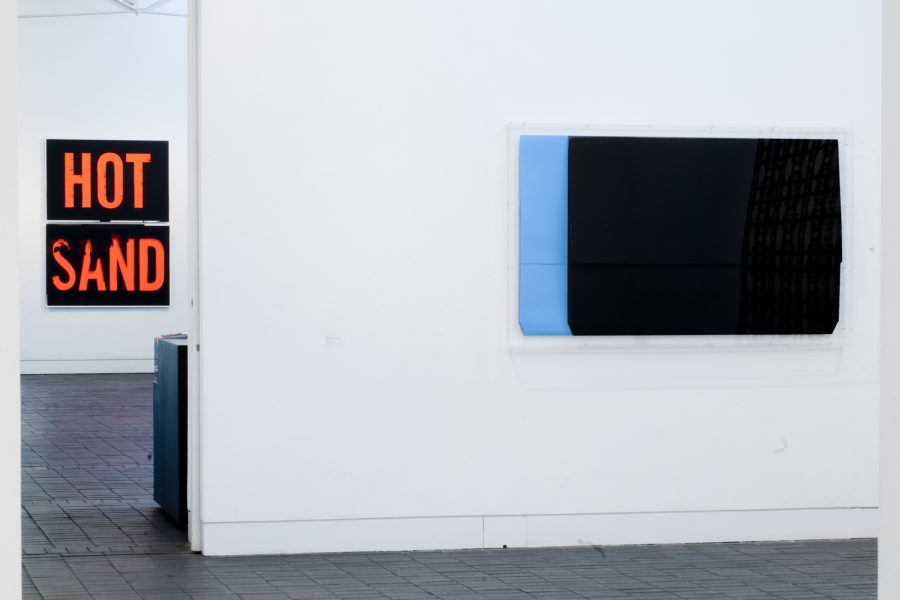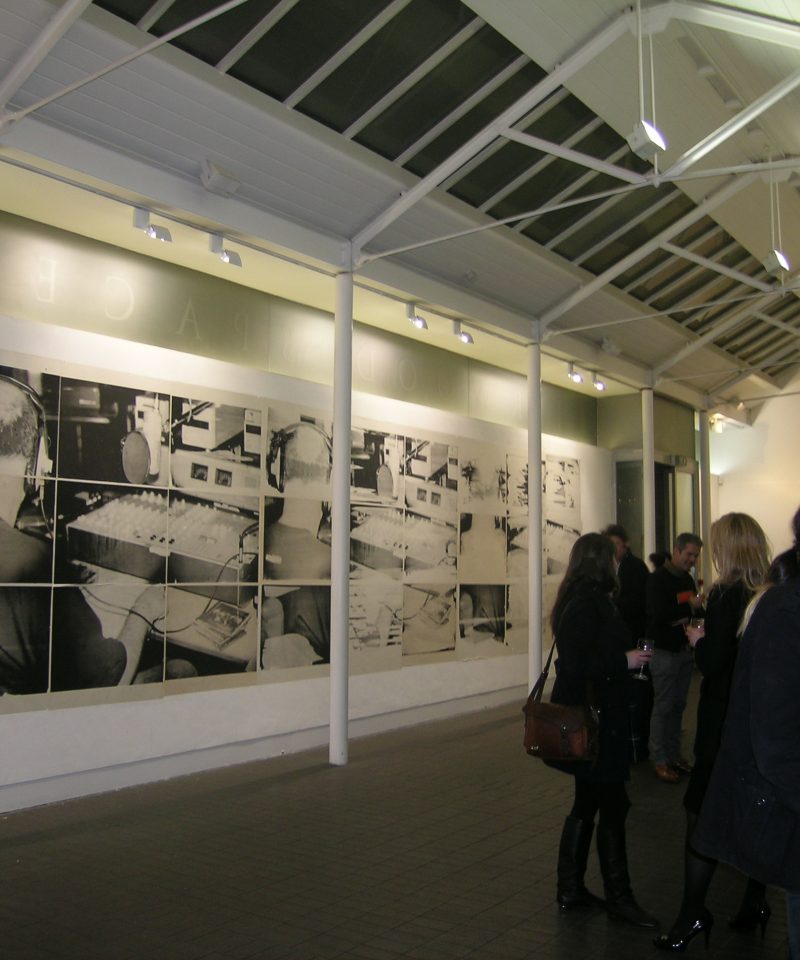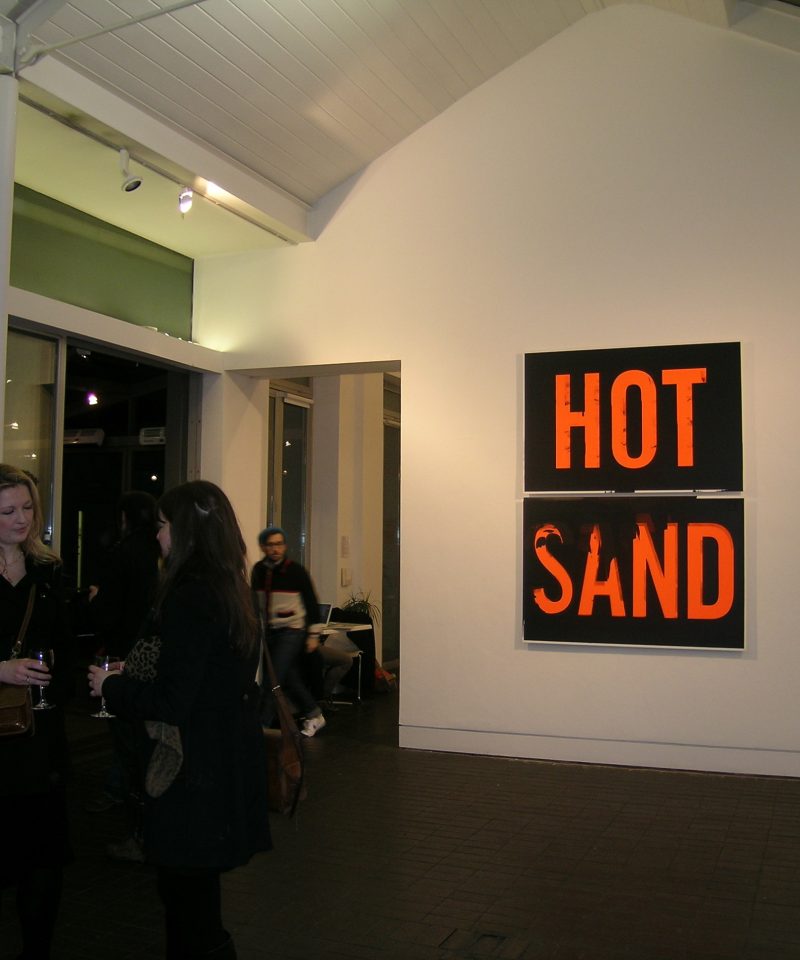Michael Fullerton’s printmaking is perhaps a lesser well-known facet of his practice, and yet is an integral part of his image making. In this interview with Jerwood Visual Arts’ Writer in Residence, Louisa Elderton, Michael discusses his interest in the symbolic value of the aesthetic, and how this manifests in the works exhibited in Jerwood Encounters: Surface Noise.
What role does printmaking play in your broader practice as a visual artist? What can you achieve by utilising printmaking processes that is distinct from painting, or indeed, are the two intrinsically connected for you?
Printmaking was necessary to explore the concepts of the ‘public domain’. The prints are modelled on political protest style posters; fly-posted with the cheapest paper etc. This was necessary to articulate my exploration of the painted, symbolic surface as a public space – as well as a private experience. So the prints, for me, are on some level about painting.
The ephemeral is not a major issue. The prints are printed with a finite amount of ink until it runs out. The obscurity and abstraction of the image was an attempt to examine the symbolic value of the ‘aesthetic’ by bringing in contingent or anomalous elements, so that any aesthetic ideals of say, ‘beauty’, or even ‘austerity’, are randomised.
What was it that interested you about John Peel as a subject?
I was trying to define oil paint as a recording and broadcasting technology and to define art as an activity which occurs in public.
You seem to explore the link between communication and aesthetic value in both AGITPROP (PMS871) and Peel Session, Maida Vale Studios, February 4, 2004; how important is this dialectic for you and how does it relate to your interest in recording and transmitting information?
Communication and aesthetic value art to me, intimately related to each other. It goes back to romantic poetry; they believed that a poem, no matter how profound in its message, will be affected by the physical experience of the words themselves. Therefore they believed that the spoken word was on some level superior, or probably to be more accurate, anterior to the written word. The physical experience was in itself, symbolic. This is the epitome of the romantic experience of painting, where colour, line etc., is symbolically valuable in itself.
How do you explore the political aspects of Gainsborough’s work in AGITPROP (PMS871)?
I used gold ink as a signifier of aesthetic value. Thomas Gainsborough’s first love was landscape. He loved painting nature for its own sake and developed a system of techniques in response to his experience of ‘beauty’. The political class at the time hijacked Gainsborough’s aesthetic sensibility to represent themselves more effectively. As John Calcutt, a tutor of mine said: ‘A powerful image is more effective than an image of power’. Thomas Gainsborough’s prowess as a painted made him in demand as a portraitist.
Your work is currently included in British Art Show 7 (Hayward Gallery, 16 Feb – 17 Apr 2011). Could you please talk a little bit about this work, and describe any relationship that it may have to the artworks that were exhibited in Jerwood Encounters: Surface Noise?
In the British Art Show 7 there is a portrait of Vidal Sassoon. Vidal reminds me of Gainsborough in reverse in that he’s a very political character who has branded himself as the epitome of style and modernity — which is the ideal of any artists and galleries.


